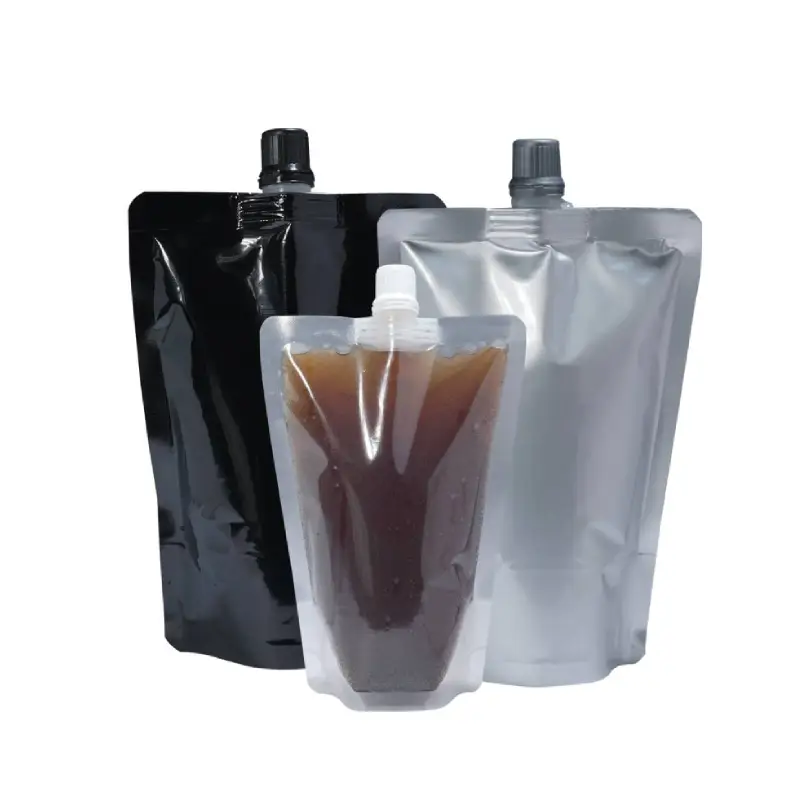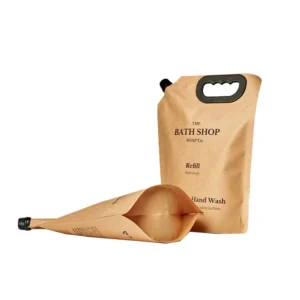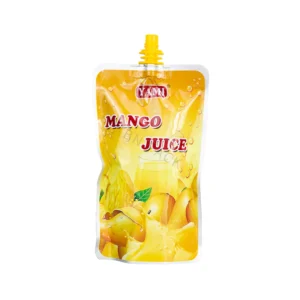Filling spouted pouches efficiently is crucial for businesses packaging liquids or semi-liquids. This blog explores various methods, from manual techniques for small batches to automated systems for high-volume production, ensuring you select the best approach.
We’ll delve into the equipment and considerations involved, including product viscosity, sanitation, and accuracy. Discover how to optimize your filling process, reduce waste, and maintain product consistency, regardless of your operation’s scale.
What Are Spouted Pouches
Recommended Spouted Pouches
Spouted pouches are flexible packaging solutions featuring a built-in spout and cap, designed for easy dispensing of liquids or semi-liquids. They offer a convenient alternative to traditional bottles and jars, combining the benefits of flexible packaging with user-friendly dispensing. This type of packaging is widely used across various industries due to its versatility and practicality.
These pouches provide a strong barrier against moisture, oxygen, and contaminants, ensuring product freshness and extended shelf life. The integrated spout allows for controlled pouring, minimizing spills and waste, while the resealable cap maintains product integrity between uses. Spouted pouches are lightweight, space-saving, and customizable, making them an attractive packaging option for both consumers and manufacturers.
How to Fill Spout Pouch?
Spouted pouches offer a versatile and convenient packaging solution for a wide range of liquid and semi-liquid products. However, the effectiveness of these pouches hinges on proper filling techniques. Whether you’re a small-scale producer or a large manufacturing operation, mastering the process of filling spouted pouches is crucial for maintaining product quality, ensuring consumer satisfaction, and optimizing production efficiency.

This guide provides a detailed, step-by-step approach to filling spouted pouches, covering everything from initial preparation to final quality control.
1. Preparation and Sanitation
Before any filling begins, ensuring a clean and sanitized workspace is paramount. This includes thoroughly cleaning all surfaces, equipment, and tools that will come into contact with the product. Depending on the product being filled, this might involve using food-grade sanitizers or sterilizing equipment.
It’s also essential to inspect the spout pouches for any defects or damage before filling. Check the spouts and seals for integrity, and ensure the interior of the pouches is free from debris. Proper hygiene practices throughout the filling process are crucial to prevent contamination and maintain product quality.
2. Product Preparation
The product to be filled must be prepared according to the specific requirements. This may involve mixing, heating, cooling, or filtering the product to achieve the desired consistency and quality. For liquids, ensuring the correct viscosity is critical for smooth filling.
If the product is temperature-sensitive, maintaining the appropriate temperature during filling is essential. This might require using heated or cooled filling equipment. Additionally, ensure that any ingredients are properly mixed and that the product is free from any unwanted particles.
3. Filling the Spouted Pouches
The filling method will vary depending on the production volume and equipment available. For manual filling, use a funnel or dispensing nozzle to carefully pour the product into the pouch through the spout. Avoid overfilling, and leave sufficient headspace for sealing. For semi-automatic or automatic filling, follow the equipment manufacturer‘s instructions.
When using automated equipment, make sure that the filling volumes are calibrated correctly. The machine should consistently dispense the same amount of product into each pouch. Regularly check the filled pouches to verify the fill levels and ensure accuracy.
4. Sealing the Caps
Once the pouches are filled, securely seal the caps to prevent leaks and maintain product freshness. Ensure that the caps are properly aligned and tightened according to the manufacturer‘s instructions. For twist-off caps, apply sufficient pressure to create a tight seal.
For automated capping systems, verify that the machine applies consistent torque to each cap. Regularly check the sealed pouches for leaks or loose caps. Tamper-evident seals should also be checked to verify they are properly attached.
5. Quality Control and Inspection
After filling and sealing, conduct a thorough quality control inspection. This includes checking the fill levels, seal integrity, and overall appearance of the pouches. Look for any signs of leaks, contamination, or damage.
Documenting the process, and keeping records of inspections, will help to maintain high quality standards. If any defective pouches are found, remove them from the production line.
By following these step by step instructions, you can help to ensure that your spouted pouches are filled correctly.
Quote Spout Pouches from BN Pack Now
Efficiently filling spout pouches is essential for maintaining product quality and optimizing production speed. Whether you’re working with small batches or large-scale operations, selecting the right filling method is crucial for accuracy and minimizing waste.
From manual filling for artisanal products to automated lines for high-volume production, each approach has its place. Understanding your product’s viscosity and your production needs will guide you to the best solution.
Maximize your filling efficiency and ensure consistent quality. Quote Spout Pouches from BN Pack Now to discuss your specific requirements and explore tailored filling solutions for your business.







